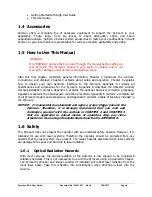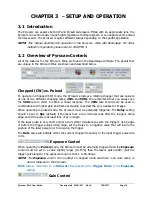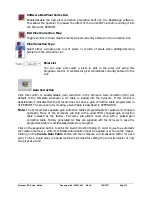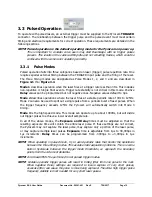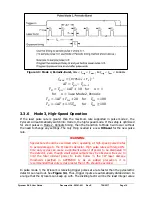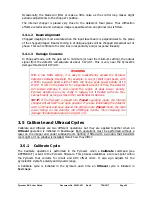
Pyrocam III
HR
User Guide
Document No. 50361-001
Rev E
7/18/2017
Page 7
Usage of this instrument may require the operator to work in the optical path of high power
lasers. Exposure to the radiation from these lasers may be sufficient to warrant the use of
protective equipment.
Unless the optical path is enclosed, the operator should be protected against accidental
exposure. Exposure to personnel other than the operator must also be considered. Exposure
hazards include reflected radiation as well as the direct beam. When working in an
unenclosed beam path, it is advisable to do so with the laser not operating, or operating at
reduced power levels. Whenever there is risk of dangerous exposure, protective eye shields
and clothing should be used.
1.6.2
Electrical Hazards
The Pyrocam universal power supply is intended to operate from a power source that applies
less than 240 Volts AC, 50/60Hz between the supply terminals. The supply output is a
regulated 12Vdc that presents no electrical shock hazard. The power supply has no user
serviceable parts and should not be tampered with.
To avoid explosion, do not operate the Pyrocam in an explosive atmosphere.
WARNING:
To prevent electrical shock, do not remove covers. No user
serviceable parts are inside. Refer servicing to qualified service
personnel.
1.7
Maintenance and Cleaning
Any internal maintenance or repair of the Pyrocam must be done by the factory. The exterior of
the camera may be cleaned with a soft, damp cloth and non-abrasive liquid. Use filtered
compressed air to remove dust particles from the surface of the window (if installed).
If no window is installed and dust has gotten onto the detector, carefully turn the Pyrocam
upside down so no additional dust falls onto the detector and gently blow clean, dry, inert gas
onto the pyroelectric detector at an angle. If you blow the gas too strongly it may ruin the
detector.






